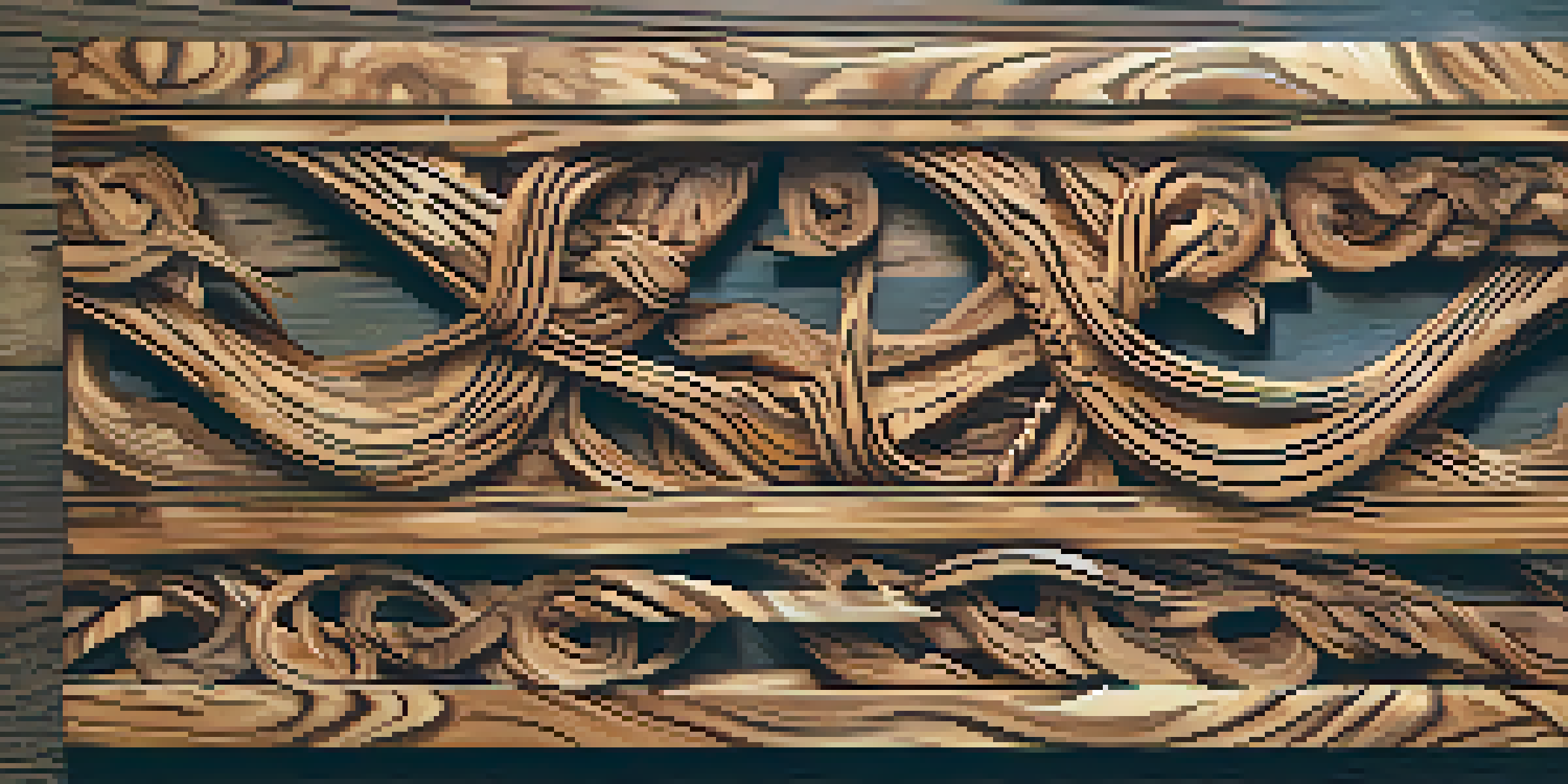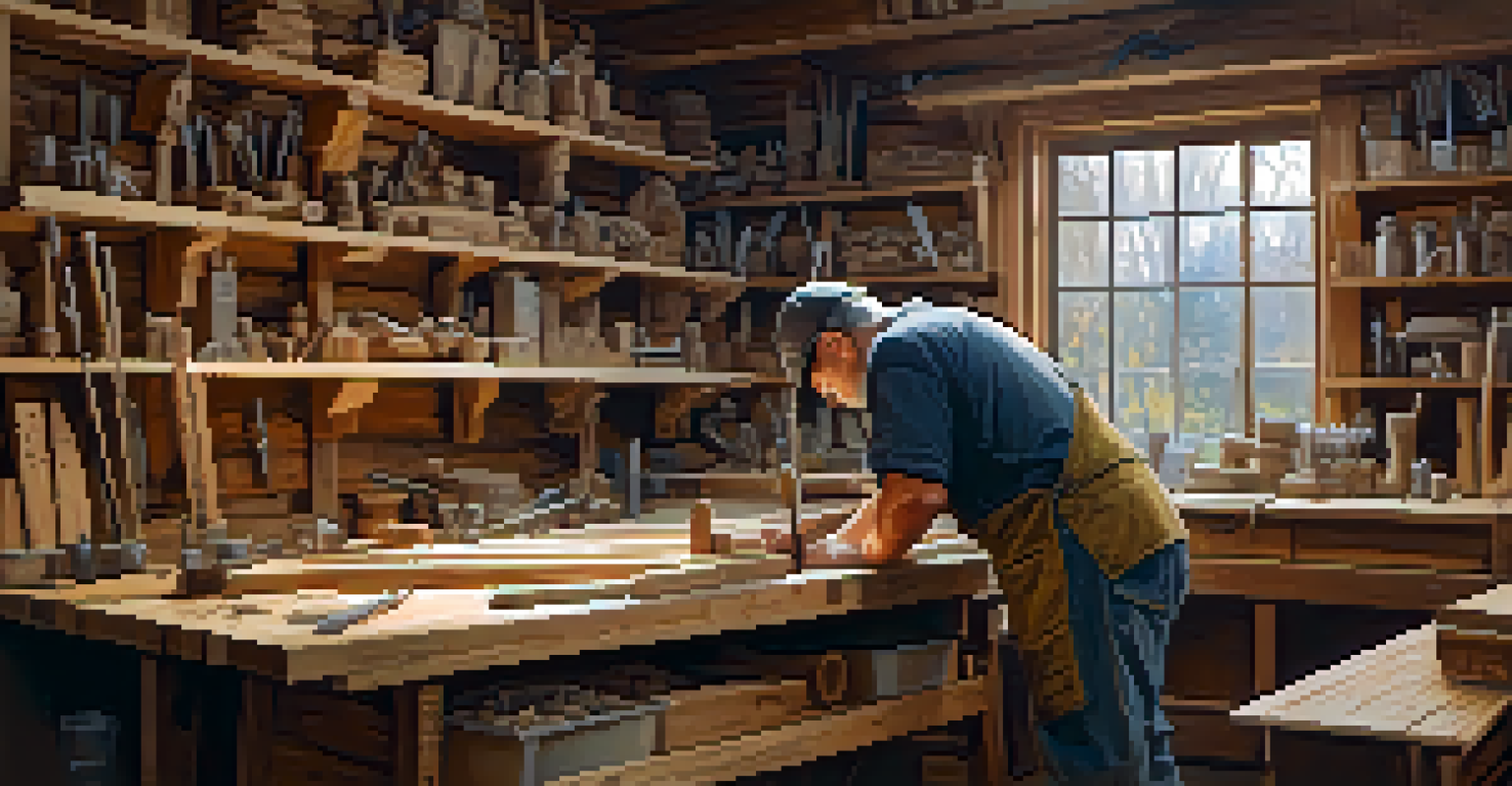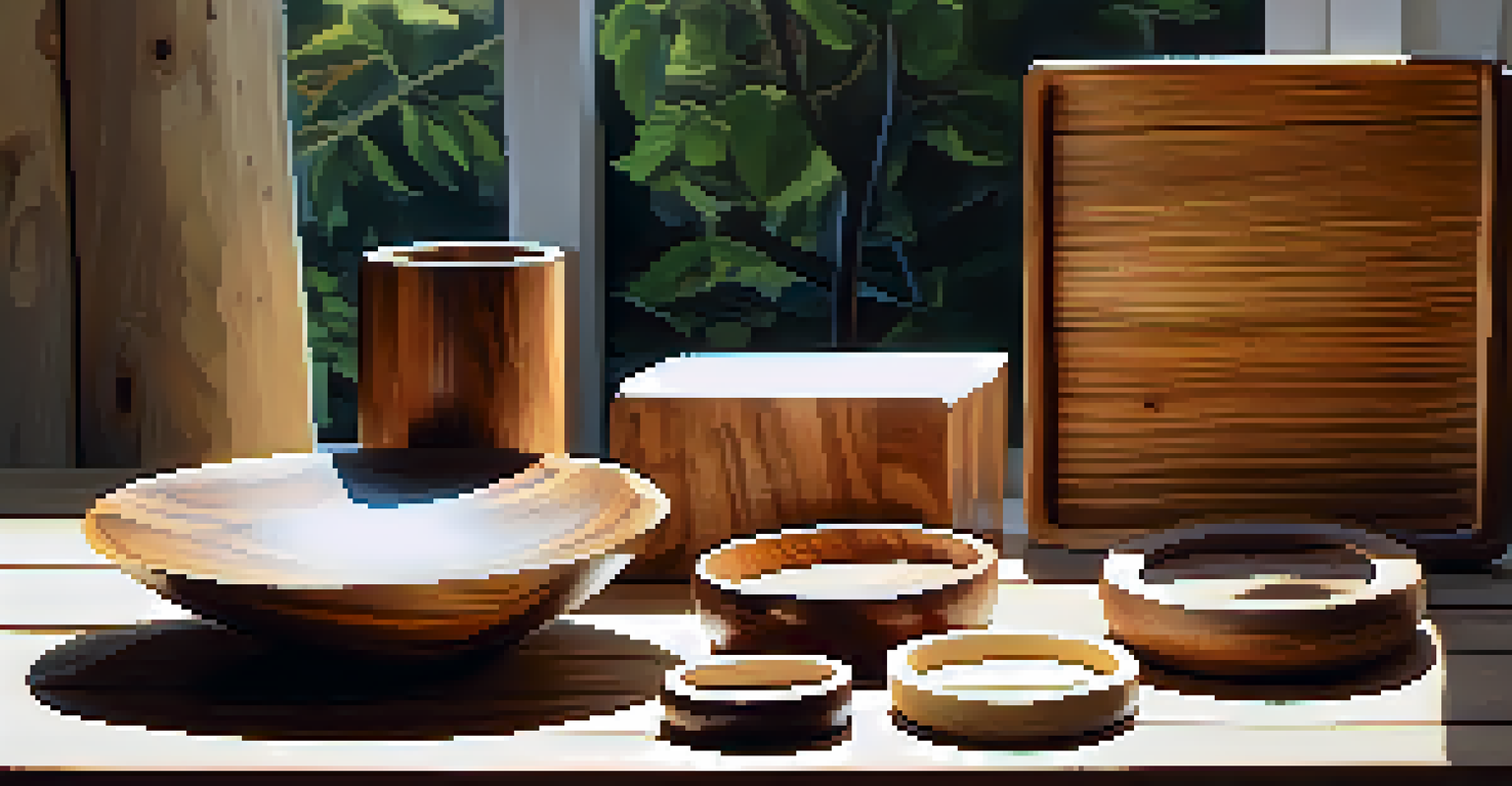Using Recycled Wood in Carving: Benefits and Techniques

Understanding Recycled Wood and Its Sources
Recycled wood refers to timber that has been repurposed from old furniture, buildings, or other sources. This type of wood often carries unique character, including knots, grains, and colors that can enhance the beauty of carved pieces. By using recycled wood, artisans contribute to sustainability by reducing waste and preserving forests.
The best way to predict the future is to create it.
Sources for recycled wood can vary widely, from reclaimed barn wood to dismantled shipping pallets. Each piece tells a story, adding personality to your carvings. This not only makes your work distinctive but also connects it to the history of the material, making it more valuable in the eyes of buyers.
Furthermore, utilizing recycled wood can help reduce the demand for new lumber, which is crucial in today’s eco-conscious environment. By choosing reclaimed materials, carvers can play a part in promoting responsible forestry practices and supporting a greener planet.
Benefits of Using Recycled Wood in Carving
One of the most significant benefits of using recycled wood is its environmental impact. By reusing materials, you help divert waste from landfills and decrease the carbon footprint associated with harvesting new trees. This makes every carving an eco-friendly choice.

Additionally, recycled wood is often more durable than new lumber. Many types of reclaimed wood have been naturally seasoned over the years, making them less prone to warping or cracking. This durability means your carved pieces can withstand the test of time, both in craftsmanship and aesthetic appeal.
Recycled Wood Enhances Sustainability
Using recycled wood reduces waste and minimizes the demand for new lumber, promoting eco-friendly practices.
Lastly, using recycled wood can often be more cost-effective. While some reclaimed materials may come at a premium, many sources offer affordable options that can be just as beautiful and unique as new wood. This allows artists to explore more creative avenues without breaking the bank.
Techniques for Carving with Recycled Wood
Carving with recycled wood requires some adaptations in technique due to the material's characteristics. First, it’s essential to examine the wood for any hidden nails or screws that could damage your tools. A careful inspection can save you from unexpected surprises during your project.
Sustainability is not a trend, it's a responsibility.
Another important technique is to acclimate the wood to your workspace before starting. Changes in humidity and temperature can affect the wood's shape, especially if it has been stored in varying conditions. Allowing the wood to adjust can help maintain its integrity during carving.
Finally, consider using specialized tools designed for hard or uneven surfaces. Recycled wood may present challenges such as knots or irregular grain patterns, so using the right tools can help manage these complexities. Embracing these challenges can lead to unique and stunning results.
Tools and Materials for Recycled Wood Carving
When carving recycled wood, having the right tools is crucial for achieving the desired results. Basic tools include chisels, gouges, and knives, but investing in high-quality tools can make a significant difference in your carving experience. For more intricate designs, consider adding power tools like rotary tools or band saws.
Additionally, don’t overlook the importance of safety gear. Since reclaimed wood can contain foreign materials, wearing goggles and a mask can protect you from dust and debris. This ensures a safer working environment while allowing you to focus on creating your masterpiece.
Durability of Reclaimed Materials
Recycled wood is often more durable than new lumber, having naturally seasoned over time, making it ideal for long-lasting carvings.
Lastly, the choice of finish is vital for enhancing the beauty of your carved piece. Natural oils or eco-friendly stains can bring out the wood's grain and protect it from wear. Selecting the right finish not only beautifies your work but also helps preserve the recycled wood for years to come.
Finding Quality Recycled Wood for Carving
Finding quality recycled wood can be a rewarding adventure for any carver. Local salvage yards, reclaimed wood dealers, and online marketplaces are great places to start your search. Each source offers a unique selection, allowing you to find the perfect piece that resonates with your artistic vision.
Another option is to connect with local woodworkers or carpenters who may have leftover materials from their projects. Building a network within your community can lead to discovering hidden gems and gaining insights from experienced artisans. Plus, it’s a great way to foster relationships and share knowledge.
Don't forget to check for local woodworking clubs or online forums dedicated to sustainable practices. These platforms often share tips on where to find quality recycled wood and may even offer trading opportunities. Engaging with like-minded individuals can enhance your carving journey and inspire new ideas.
Inspiration for Recycled Wood Carving Projects
When it comes to inspiration for recycled wood carving, the possibilities are truly endless. From intricate sculptures to functional items like bowls and furniture, each piece can showcase the wood's unique character. Consider starting with smaller projects, such as coasters or keychains, to get familiar with the material.
Another great source of inspiration is nature itself. Many carvers draw ideas from organic shapes and forms, using the natural features of the wood to guide their designs. Embracing the imperfections of recycled wood can lead to stunning, one-of-a-kind pieces that highlight the beauty of nature.
Inspiration from Unique Characteristics
The distinct features of recycled wood can inspire creative projects, allowing artisans to embrace its imperfections for unique designs.
Lastly, explore online platforms like Pinterest or Instagram for creative ideas. Following artisans who specialize in recycled wood can spark your imagination and help you discover new techniques. Remember, each project is an opportunity to express your creativity while honoring the material's history.
Sustainable Practices in Wood Carving
Incorporating sustainable practices into your wood carving routine is essential for minimizing environmental impact. Beyond using recycled wood, consider sourcing materials from suppliers who prioritize responsible forestry. This ensures that your artistic endeavors contribute to a healthier planet.
Additionally, aim to reduce waste in your workspace. Save scraps for future projects or consider donating them to local schools or community centers for educational purposes. This not only helps others but also fosters a culture of creativity and sustainability.

Finally, educate yourself and others about the importance of sustainable carving practices. Sharing your knowledge can inspire fellow artists to consider eco-friendly materials and techniques. Together, we can make a positive impact on our environment while creating beautiful works of art.